Main menu
Common skin conditions

NEWS
Join DermNet PRO
Read more
Quick links
Author: Vanessa Ngan, staff writer 2003. Updated by A/Prof Amanda Oakley, February 2016.
Introduction Causes Clinical features of congenital hypertrichosis Clinical features of acquired hypertrichosis Treatment
Hypertrichosis is excessive hair growth over and above the normal for the age, sex and race of an individual, in contrast to hirsutism, which is excess hair growth in women following a male distribution pattern. Hypertrichosis can develop all over the body or can be isolated to small patches.
Hypertrichosis may be congenital (present at birth) or acquired (arises later in life).
The cause of hypertrichosis is unknown. Congenital hypertrichosis is believed to be a genetic disorder that is inherited or occurs as a result of spontaneous mutation. Acquired hypertrichosis lanuginosa sometimes occurs in people who at a later stage are diagnosed with a cancer of some form. This hair growth, also known as malignant down, is often confined to the face with long fine silky hair noticeable on the nose and eyelids, sites that are normally hairless. It is not known why a cancer causes this excessive hair growth.
Generalised acquired hypertrichosis may be associated with:
Localised acquired hypertrichosis may be associated with:
This is a very rare syndrome with only about 50 cases reported worldwide since the Middle Ages. The condition is characterised by excessive hair growth on a child at birth. Most of the body is covered with lanugo hair, which is an unpigmented, fine, soft and silky hair that covers the fetus and which is usually shed at around 8 months gestation and replaced with fine vellus hair and terminal scalp hair in preparation for birth. In congenital hypertrichosis, lanugo hair continues to grow and this excessively long fine hair persists throughout life.
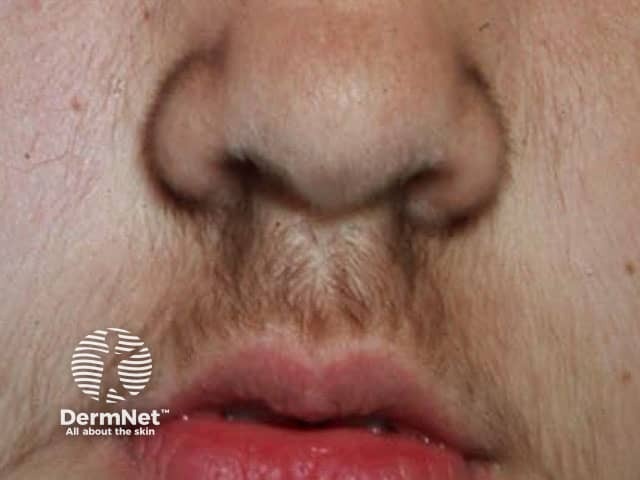
Hypertrichosis
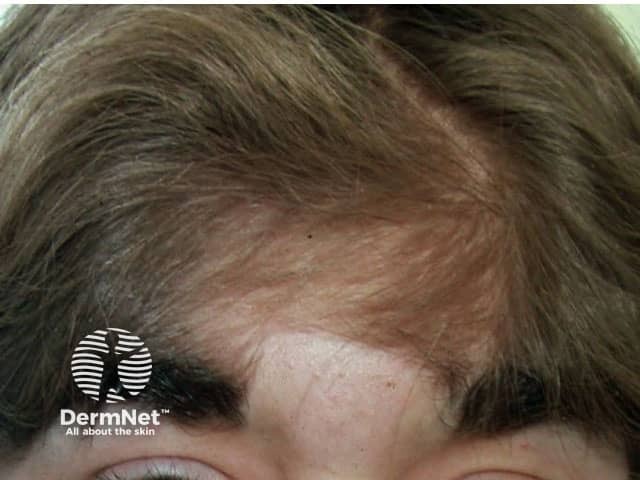
Hypertrichosis
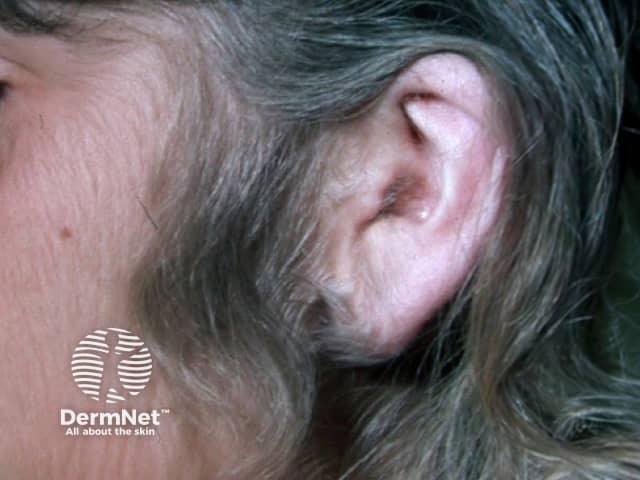
Hypertrichosis
This is a variation of congenital hypertrichosis. This condition involves all over body hair growth, but the hair is fully pigmented terminal hair and the condition is almost always associated with gingival hyperplasia (teeth defects). People with congenital hypertrichosis are often referred to as wolf men, werewolves and ape-men and back in the 19th century and perhaps even today, are crowd-drawers at sideshow acts.

Congenital hypertrichosis terminalis
This is an unusual form of hypertrichosis where a solitary circumscribed area of terminal hair growth occurs. It is not usually associated with any other diseases, except if it arises as a faun-tail on the lower back, when it may indicate underlying spina bifida. Naevoid hypertrichosis can occur at birth or appear later in life. An example of naevoid circumscribed hypertrichosis is the presence of a solitary and very bushy eyebrow.
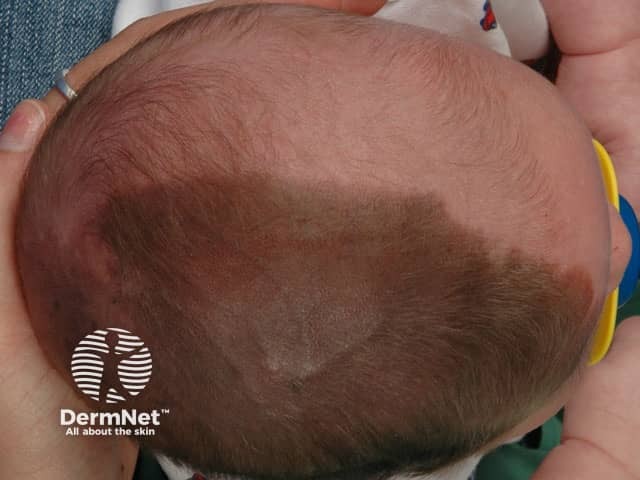
Hypertrichosis
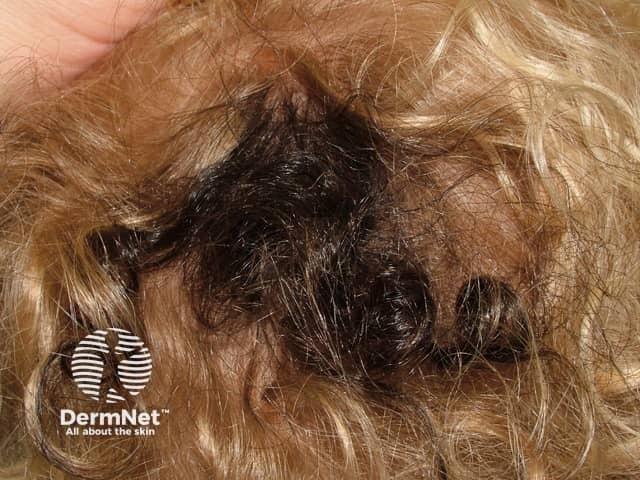
Hypertrichosis
Hypertrichosis may also be a feature of congenital melanocytic naevi, vascular malformation, Becker naevi and less frequently, other birthmarks.

Melanocytic naevus
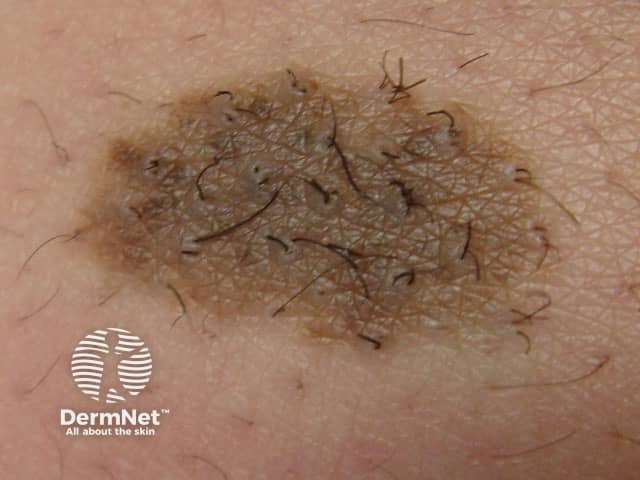
Melanocytic naevus
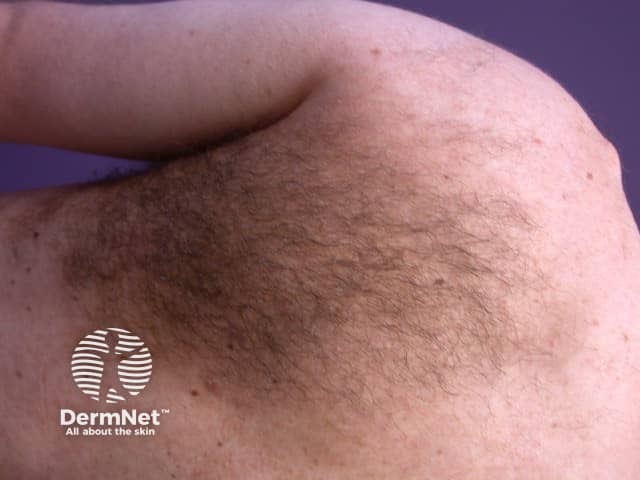
Becker naevus
Acquired hypertrichosi describes excess hair growth that develops in an individual after birth. The hair is usually unpigmented vellus hair or may involve pigmented terminal hair. Excess hair growth may be localised to a particular area or generalised and covering all hair-bearing areas of the body.
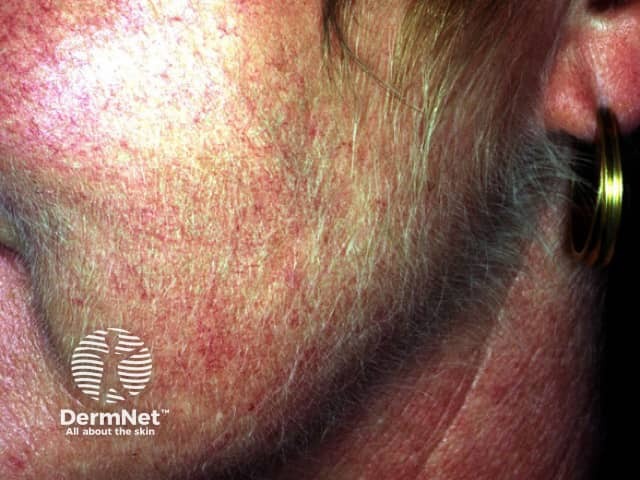
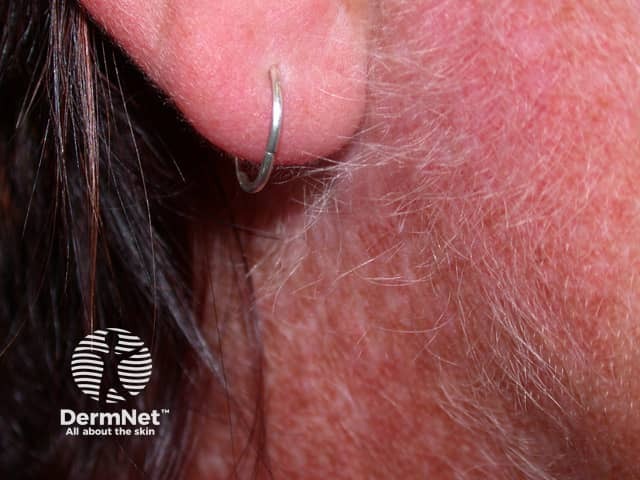
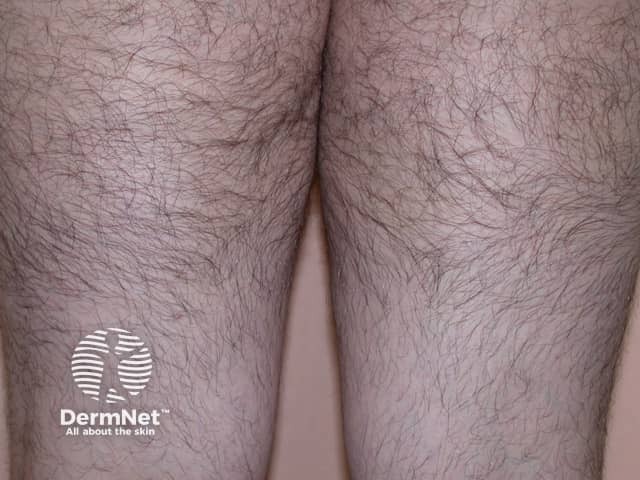
Treatment of hypertrichosis is basically hair removal. Several methods are available but need to be repeated regularly as hair continues to grow back. They may also cause scarring, dermatitis or hypersensitivity reactions.
More recently, laser hair removal has been proposed as a treatment option. It appears to have fewer side effects and produces a longer lasting result.